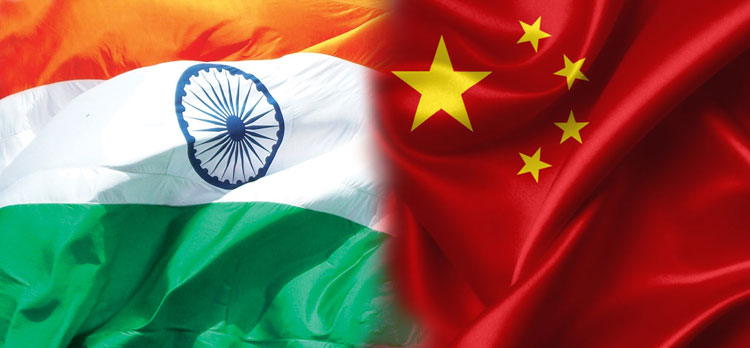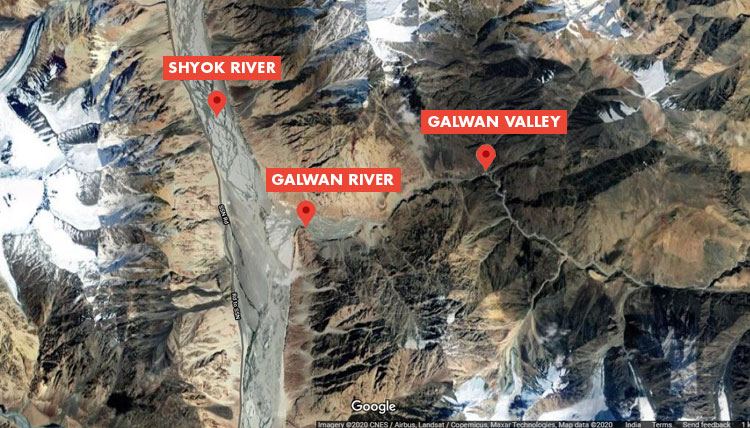INDIAN ARMED FORCES CHIEFS ON OUR RELENTLESS AND FOCUSED PUBLISHING EFFORTS

The insightful articles, inspiring narrations and analytical perspectives presented by the Editorial Team, establish an alluring connect with the reader. My compliments and best wishes to SP Guide Publications.

"Over the past 60 years, the growth of SP Guide Publications has mirrored the rising stature of Indian Navy. Its well-researched and informative magazines on Defence and Aerospace sector have served to shape an educated opinion of our military personnel, policy makers and the public alike. I wish SP's Publication team continued success, fair winds and following seas in all future endeavour!"

Since, its inception in 1964, SP Guide Publications has consistently demonstrated commitment to high-quality journalism in the aerospace and defence sectors, earning a well-deserved reputation as Asia's largest media house in this domain. I wish SP Guide Publications continued success in its pursuit of excellence.
- MoD initiates comprehensive review of Defence Acquisition Procedure 2020, pushes for defence reforms
- G7: The Swansong
- Kalinga Connect: South Asia to Polynesia
- Must Credit DRDO for Operation Sindoor, now what is next for defence R&D?
- The layered Air Defence systems that worked superbly, the key element of Operation Sindoor
- Operation Sindoor | Day 2 DGMOs Briefing
- Operation Sindoor: Resolute yet Restrained
Before & After Galwan
It is the difference in historical perception, the policy of "Nibble and Occupy" adopted by China and lack of understanding on the part of successive Indian governments since independence of the huge strategic disadvantage of loss of peripheral territory, that has emboldened China to attempt violations with impunity. There have been attempts from both sides to resolve the issue with questionable sincerity of the Chinese as it has been proved from time to time.
 |
The Author is Former Chief of Staff (COS), Central Command, Indian Army. He is an expert on Siachen and Ladakh with experience in counter insurgency operations in J&K and North East and is also an expert on Information Warfare. |

The brutal clash at Galwan resulting in martyrdom of 20 Indian Soldiers including the Commanding Officer of 16 Bihar on the Indian side and an undisclosed number from China is the worst that has happened in any clash between the two countries since 1967 and the first loss of life on these frontiers since 1975. This can not be brushed aside as an isolated incident as China has been building up, to begin with, infrastructure and then PLA forces frequently violating the “Peace and Tranquillity Agreement of 1993” by default, more often by design. Since the annexation of Tibet in 1952, the Chinese Government has always been claiming that India is in illegal occupation of their land, which is disputed due to different versions of history.
India’s claim is based on the 1914 Shimla agreement between the then Government of India and Tibet and China sites historical rights from the boundaries as they existed since Qing Dynasty (1644-1911) including Tibet, which as per them, includes Galwan River Valley. It is this difference in historical perception, the policy of “Nibble and Occupy” adopted by China and lack of understanding on the part of successive governments since independence of the huge strategic disadvantage of loss of peripheral territory, even if “a blade of grass does not grow there” emboldened China to attempt violations with impunity. The 1962 war, which continues to be nemesis of Nehru till date, and other smaller conflicts as also the tensions on the LAC has been the consequences of the same.
China has no intention of solving the border issue and two, with the un-demarcated lines of what they consider as China's LAC, keep shifting to grab more and more territory.
There have been attempts from both sides to resolve the issue with questionable sincerity of the Chinese as it has been proved from time to time. India has always sought for peace. The focus of the China Study Group (CSG), the “Agreement on Peace and Tranquillity 1993”, post which there have been 22 meetings, the frequent meetings of “Working Mechanism for India-China Consultation & Coordination (WMCC) on India, China Border Affairs”, has yielded to nothing. Rather, the history of negotiations between the two on border issue brings out two aspects glaringly. One that China has no intention of solving the border issue and two, with the un-demarcated lines of what they consider as China’s LAC, keep shifting to grab more and more territory.
According to the 1993 Peace and Tranquillity Agreement, both sides were supposed to keep their military forces to the minimum. However, China continued to violate this agreement at will and opportune moment. The first major violation was when India was fighting the Kargil war in 1999 and had to move troops to the Western Front. Finding thin deployment and only ITBP on ground, PLA constructed a road in the area of Track Junction which was one of the only two disputes in Ladakh at that time, the second being Trig Heights. This not only emboldened the PLA but also they started patrolling these areas with greater frequency on their side of the LAC and whenever possible attempting transgressions of our perception of LAC. Invariably China has created disputes by bringing in different perception in every meeting, never raised earlier, and then starts the process of claiming by physically moving patrols and troops to these areas.
China has created disputes by bringing in different perception in every meeting, never raised earlier, and then starts the process of claiming by physically moving patrols and troops to these areas.
The Galwan River Valley (GRW) has got in to focus in the recent past due to the Darbuk-Shyok-Daulat Beg Oldie (DSDBO) Road and its domination from Patrolling Point 14 (PP14). However, it is the Lukung North, i.e. the area of Finger 4 to Finger 8 and the Dapsang Plains which have been traditionally in dispute. Just as Lukung North opens in to the Chushul valley from Northern side of the Pangong lake, Dapsang Plains lead to Saser La and thus connect with Nubra valley and Shaksgam Valley (illegally ceded by Pakistan to China in 1963) with Tibet bypassing the Saltoro ridge. Hence Dapsang Plains/valley is strategically equally significant and crucial. In addition to the two major clashes in 2013 & 2014, there have been dozens of face offs annually. The latest reports on the major build up opposite Depsang hence is understandable.

This game of deceit, i.e. to continue to build trade and commerce relations and agreements on one side and simultaneously focus on build up of infrastructure towards the LAC and keep pushing the PLA troops to keep the frontiers simmering that makes China most untrustworthy. Hence the statement of the Indian Foreign Minister on June 23, “The heart of the matter behind frequent incidents is the massive build up and Chinese PLA troops behaving in complete disregard of mutually agreed military norms” is most relevant and contextual. China believes that India is the greatest strategic threat and an impediment in becoming a hegemon as well as super power. The String of Pearls strategy and keeping the other frontiers of India always smouldering, dominate economically and block wherever possible at the regional and international level has been the greater game at play. China has now been established as master of spinning deceit.
The Galwan River Valley (GRW) has got in to focus in the recent past due to the Darbuk-Shyok-Daulat Beg Oldie (DSDBO) Road and its domination from Patrolling Point 14 (PP14)
However, India has come of age since 1962. With a strong centre and battle hardened military, China and the PLA is confronting a different country altogether. It has the capability and the resolve. The country now need to bear every might of the capability with tenacity and doggedness. Instead of chest thumping hyper nationalism there is a need for cold strategic thinking and moves. PLA fights for the party (CCP). Hence they have been able to keep the lid on their casualties. Professional armies have to be accountable to the people and the political leadership. And that accountability has been exemplified at Galwan, which has been aptly reciprocated by the people.
China, because of it’s deceits in practically every domain, economic, cyber crimes, espionage and military transgressions and the latest one of hiding the virus from the world, is alone in this confrontation with India. At the same time, we too will have to fight our own war. Therefore the national resolve should be to build up our capabilities. It’s time to revisit the Kargil Review Committee Report, which was written by none other then the father of present Foreign Minister, as also the Group of Minister’s Report and implement some of the recommendations which have been brushed aside. Failure of intelligence and guarding of borders were the two biggest short comings brought out by the Committee. We have blundered once again on the same. One Border-One Force has been the crying need since the very beginning.
India has come of age since 1962. With a strong centre and battle hardened military, China and the PLA is confronting a different country altogether.
India has always come together in such crisis with all its might. After the clash at Galwan, the business with China can not be as usual. On the other hand it’s China which is facing crisis on multiple fronts, both in the close neighbourhood and beyond. India shall not now draw down either on the counter posture nor the road construction and infrastructure development. There are a few key issues on which the government and the nation must focus.
- Continue relentlessly the aggressiveness with which the message has been sent by troops on ground. The on going build up must continue. This has to be done as stated earlier with cold strategy rather then chest thumping hyper nationalism.
- Bring China on the table and seek settlement of the LAC once and for all. To push for the same get the entire might of our Comprehensive National Power with all the nine elements and as a whole of nation approach.
- Not only the opposition parties but entire nation including experts all across the society from military, bureaucracy, business and other fields be brought together. The three major challenges of COVID, economic crisis and the security situation are having deep resonance with people across the country. This must manifest in our collective strength.
- Empower the Defence Services by equipping them well and resolve all vexed issues of pay, status and ...ensuring that our fighting troops are in their highest state of morale.
- Reinforce the QUAD. Make it more vibrant and more inclusive by bringing in the rim countries and let that be an additional frontier for China to deal with.
- The foreign policy must break out of the shackles of colonial mindset and be recalibrated, as also our China policy demonstrating our actual strength and resolve as a power to be reckoned with at the regional and international level.
- Immediately look at formulating a National Policy and National Security strategy on Neighbourhood, encompassing India’s immediate and more distant neighbours, especially China and Pakistan. This has been neglected by successive governments and is required to guide our political, military, bureaucratic and diplomatic establishments to ensure stable relations with our neighbours, small and large, friendly or inimical.
For China the only way, as our Ambassador to China Vikram Misri has stated on June 26, “is to resolve the current military standoff along the LAC in Eastern Ladakh”. The action taken by the Chinese on the LAC has damaged considerable trust in the bilateral relationship. It is for Beijing to realise that trying to “change the status quo by resorting to force or coercion is not the right way forward” and shall be responded with national resolve.
Author's Full Profile
Lt General Jagdeep Kumar Sharma, AVSM, Chief of Staff (COS), Central Command retired from service on April 30, 2019 after an illustrious career in the Army.
He is a scholar warrior and senior strategic military leader with close to 42 years of coloured service. An expert on Siachen and Ladakh with experience in counter insurgency operations in J&K and North East and Peace Keeping Missions in West Africa is also an expert on Information Warfare. As part of Directorate of Military operations for over five years at different levels have seen through Kargil War, Operation Prakaram, Uri and many crisis situations of internal conflict and out of country operations including hostage crisis of Sierra Leone and Lebanon.
Intensely committed to academic pursuance with Doctoral Thesis on Civil Military Relations and many articles on military and strategic leadership. As part of National Defence College, India for three years have trained and engaged with senior and strategic leadership of India and countries across the globe. He has been writing for various magazines and speaking in various forums and institutes on strategy and leadership.





